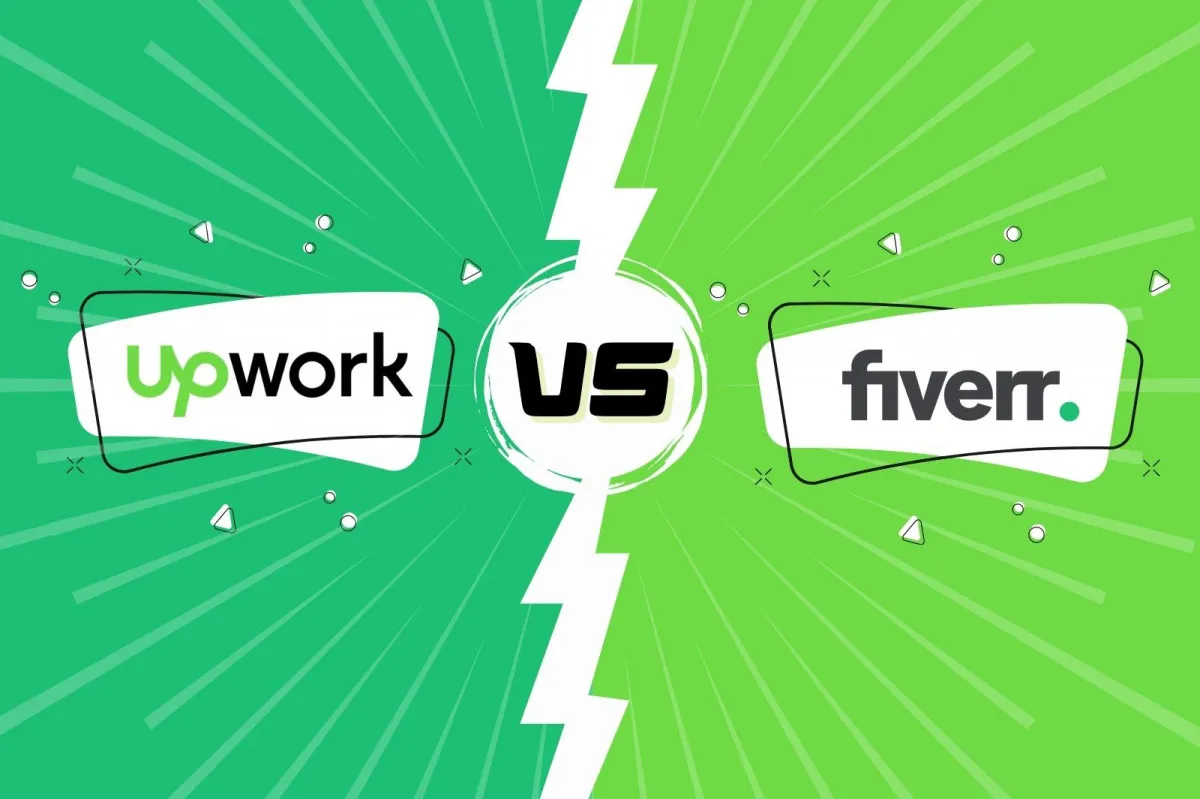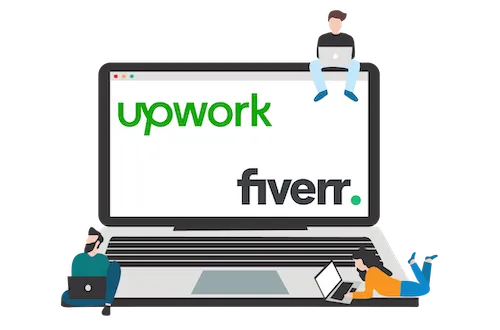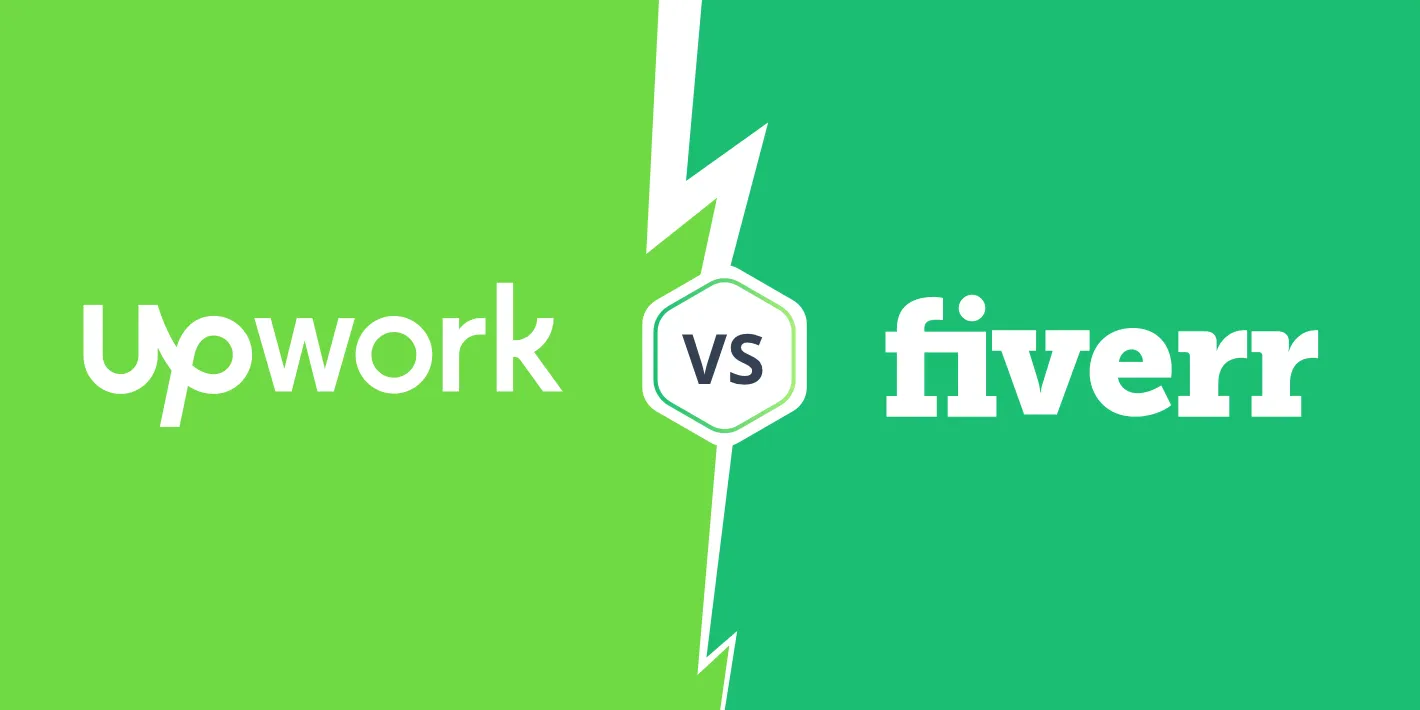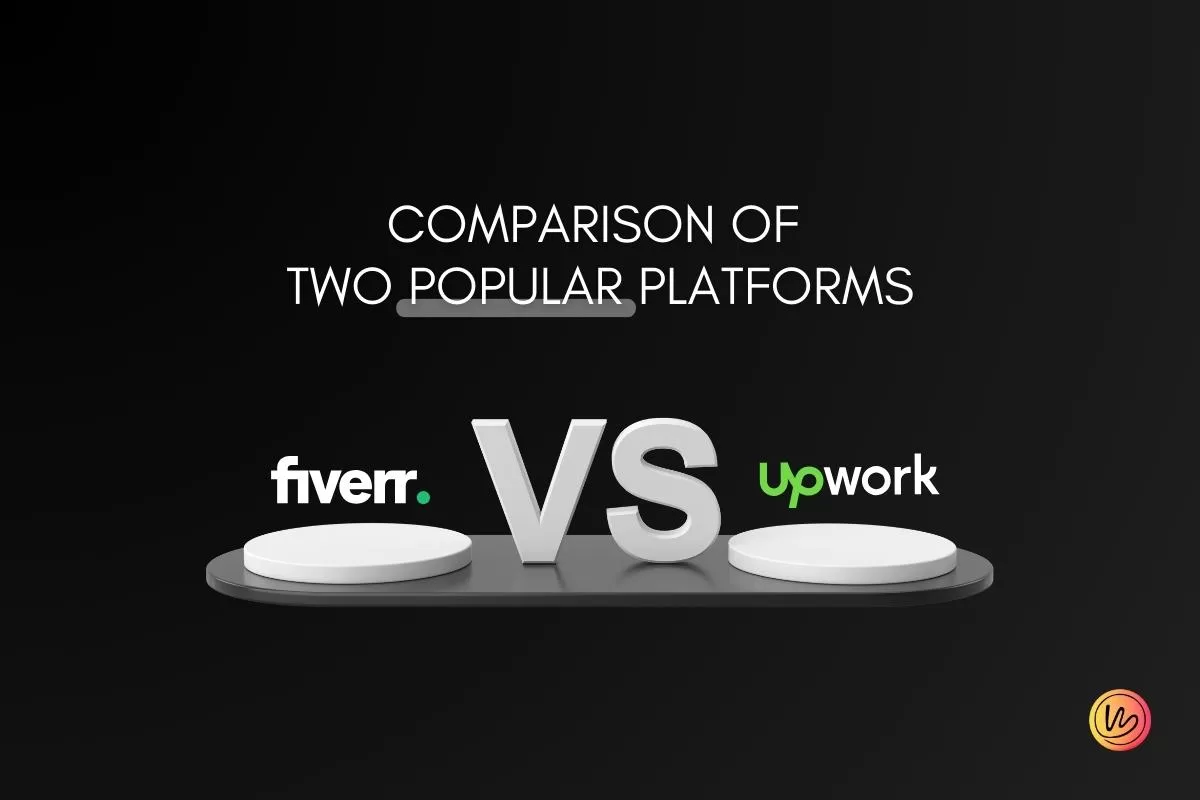When it comes to freelancing platforms, two names often rise to the top of discussions: Upwork and Fiverr. Both offer unique features and cater to different types of freelancers and clients. In this blog post, we’ll dive deep into the details of each platform, exploring their strengths and weaknesses to help you decide which one might be better suited for your needs. Whether you’re a freelancer looking for work or a client seeking talent, understanding these platforms is essential in today’s gig economy.
Overview of Upwork

Upwork is one of the largest and most well-known freelancing platforms in the world. Founded in 2015 from the merger of Elance and oDesk, it connects businesses and independent professionals, providing a space where clients can post job listings and freelancers can bid on them. But what sets Upwork apart from its competitors? Let’s explore.
- Diverse Job Categories: Upwork boasts a wide range of categories, including writing, design, programming, marketing, and even customer service. This diversity makes it a versatile option for both freelancers and clients, accommodating various fields and skill levels.
- Flexible Payment Plans: One of the standout features of Upwork is its flexible pricing model. Freelancers can charge by the hour or project-based fees, giving clients options that suit their budget and job specifics.
- Robust Search and Filters: Upwork offers a robust search tool that allows clients to find freelancers based on skills, experience, rates, and even ratings. This makes the hiring process more efficient and increases the chances of finding a perfect match.
- Safety and Security: Upwork places a strong emphasis on secure payment methods, and it offers a dispute resolution system. Clients can feel confident that their funds are protected, while freelancers have peace of mind knowing they’ll be paid for their work.
Overall, Upwork serves as a comprehensive and user-friendly platform for freelancers and clients alike, providing a vast array of opportunities to connect, collaborate, and create.
Also Read This: Does Fiverr Ban You if You Fail an Inspection?
Overview of Fiverr

Fiverr is an online marketplace that connects freelancers with clients looking for a variety of services. Launched in 2010, it has grown rapidly into one of the leading platforms for freelance work. Unlike traditional job platforms, Fiverr operates on a "gig" economy model where freelancers, or "sellers," offer specific services, known as gigs, at starting prices—typically as low as $5. This makes it particularly attractive for individuals or small businesses looking for affordable options.
Some key features of Fiverr include:
- Diversity of Services: Fiverr hosts a broad array of categories including graphic design, digital marketing, writing, programming, video editing, and even unique offerings like lifestyle coaching and voice-over work.
- User-Friendly Interface: The platform is designed to be easy to navigate, making it simple for clients to find the services they need quickly. Sellers can create gig listings with descriptions, pricing tiers, and examples of their work.
- Flexible Pricing: While gigs might start as low as $5, sellers can offer multiple pricing tiers for various levels of service. This means clients can choose from a basic package to a premium one based on their budget.
- Reviews and Ratings: User feedback plays a significant role. Clients can leave ratings and reviews for sellers, which helps potential buyers gauge the reliability and quality of the services offered.
Overall, Fiverr is an excellent choice for clients looking for quick, cost-effective services with a wide range of options while offering freelancers an accessible platform to showcase their talents and skills.
Also Read This: How to Pay Fiverr in Pakistan
Key Differences Between Upwork and Fiverr

While both Upwork and Fiverr serve as platforms for freelancers and clients to connect, they cater to different needs and operate on fundamentally different models. Here’s a detailed breakdown of the key differences:
| Feature | Upwork | Fiverr |
|---|---|---|
| Service Model | Hourly or project-based | Gig-based (fixed-price) |
| Client Interaction | Clients can post jobs and freelancers can submit proposals. | Clients browse and purchase gigs directly. |
| Freelancer Vetting | Freelancers can be vetted based on skills and job history. | Less emphasis on vetting; services are purchased directly. |
| Pricing Structure | More flexible with negotiation. | Fixed price points starting at $5. |
| User Experience | More complex; involves project bidding and proposals. | Simple; easy browsing and purchasing. |
| Range of Services | Focuses on professional services like development. | Wider variety, including more creative and niche services. |
So, whether you are looking for a quick turnaround on a simple task or a long-term collaboration on a complex project, knowing these differences can help you choose the platform that best fits your needs.
Also Read This: Where Does Fiverr Money Go?
5. Pricing and Payment Structures

When it comes to freelancing platforms, pricing and payment structures can significantly influence your decision-making process. Both Upwork and Fiverr have distinct approaches to how freelancers charge for their services and how those services are billed to clients.
On *Upwork, freelancers set their own hourly rates or project rates. This flexibility can be appealing for experienced freelancers who have a clear understanding of their worth. Upwork charges a service fee that varies based on your earnings with a single client. For example:
| Earnings | Service Fee |
|---|---|
| $0 - $500 | 20% |
| $500.01 - $10,000 | 10% |
| $10,000.01 and above | 5% |
This structure rewards long-term relationships, making it beneficial for freelancers who land ongoing projects. On the flip side, clients can sometimes find the costs to be a bit high, especially for smaller one-off projects.
Meanwhile, Fiverr operates on a fixed-price model, where freelancers offer "gigs" starting at $5. However, it's important to note that prices can scale significantly based on the complexity and quality of the service offered. Fiverr takes a flat commission of 20% on every transaction. So, if you charge $100 for a gig, you'll only receive $80 after Fiverr's cut. This model can be easier for new clients to digest as they can see upfront costs without any hidden fees.
Ultimately, whether you prefer Upwork's variable pricing or Fiverr's fixed gigs will depend on your own freelancing style and how you like to position your skills in the market.
Also Read This: How to Change Currency in Fiverr
6. Type of Work and Projects Available
The types of work and projects available on each platform can serve as a crucial factor in your decision-making, especially if you're looking for a particular niche or style of work.
On Upwork, you’ll find a wide range of project types, catering to various industries including technology, writing, design, marketing, and customer support. This platform is particularly strong in:
- Long-term projects
- Complex jobs requiring multiple skill sets
- High-end professional services
Freelancers can browse through job listings and submit proposals, allowing for some competition among providers, which might lead to better rates. Clients typically post detailed job descriptions, making it easier to gauge what they're looking for.
On the other hand, Fiverr focuses more on individual services, often referred to as “gigs.” The work available tends to be more varied in terms of creativity and specialized tasks, such as:
- Graphic design
- Social media marketing
- Video production
- Voiceover work
Fiverr is particularly popular among start-ups and individuals looking for quick, one-off services. Clients can easily browse through freelancer profiles and gigs, making it a much faster booking process.
In summary, if you’re leaning towards long-term, complex projects, Upwork might be your best bet. However, if quick, creative gigs are more your speed, Fiverr has plenty to offer. Understanding what type of work you want is key to selecting the right platform for your freelancing journey.
Also Read This: How Bloggers Can Use Fiverr to Enhance Their Content and Growth
Client and Freelancer Experience
When diving into the world of freelancing platforms, the experiences of both clients and freelancers play a huge role in determining which platform reigns supreme. Let's break down what each party typically encounters on Upwork and Fiverr.
For clients, Upwork usually offers a more robust suite of tools for project management and communication. Clients can post complex job listings, review freelancer profiles in detail, and communicate easily through the platform. Upwork also provides a more structured environment with features like time tracking and milestone payments, which can enhance the overall experience.
- Pros for Clients on Upwork:
- In-depth freelancer profiles with reviews, portfolios, and skill assessments.
- Built-in communication and project management tools.
- Ability to hire freelancers by hourly or fixed-price contracts.
On the flip side, Fiverr is known for its simplicity and quick engagement. Clients can browse through ready-made service offerings (called "gigs"), which makes it easier to find something that aligns perfectly with their needs. This model is particularly appealing for clients looking for smaller and immediate projects.
- Pros for Clients on Fiverr:
- Fast and straightforward project sourcing.
- Transparent pricing with no hidden fees.
- Variety of service offerings at different price points.
For freelancers, Upwork tends to foster a more professional atmosphere, particularly for those pursuing long-term contracts or relationships. The bidding system allows freelancers to showcase their skills and proposals in a competitive manner. However, it can also feel overwhelming due to the competition.
- Pros for Freelancers on Upwork:
- Access to a wide range of clients and projects.
- Opportunities to build long-term relationships.
- Ability to showcase skills comprehensively through profiles.
On Fiverr, freelancers can create their own service listings, making it a great platform for those with a distinct offering. While this may feel a bit less professional, it can be liberating and allows for creative freedom.
- Pros for Freelancers on Fiverr:
- Independence to define work offerings and pricing.
- Easy to start marketing services quickly.
- Potential to earn via upsells and additional services.
Also Read This: How Much Does Fiverr.com Cost?
Platform Usability and Features
When it comes to usability, both Upwork and Fiverr have their unique strengths and weaknesses. Choosing the right platform for your freelancing or hiring needs can heavily depend on how you interact with and utilize these features.
Upwork emphasizes offering detailed project management features. The dashboard is comprehensive, allowing clients and freelancers to track progress, manage timelines, and communicate effectively through built-in messaging. Key features include:
- Time tracking for hourly projects.
- Milestone-based payments for larger projects.
- In-depth search filters to find freelancers based on skills, rates, and feedback scores.
- Options for team collaboration.
However, the breadth of features can sometimes feel daunting, especially for new users. The learning curve might be steeper for those unfamiliar with freelancing platforms.
On the other hand, Fiverr* prides itself on being user-friendly and straightforward. The layout is simple, which is excellent for newcomers. Key features include:
- Easy gig creation for freelancers.
- Transparent pricing structures with straightforward upsell options.
- Fiverr’s “Buyer Request” feature which allows clients to reach out to freelancers.
- A rating and review system to help establish trust quickly.
Fiverr’s streamlined approach can be a huge advantage for clients looking for quick turnaround projects as well as for freelancers who want to dive into work without extensive setup.
In summary, while Upwork might cater more towards professionals looking for ongoing engagement with advanced tools at their disposal, Fiverr appeals to those seeking simplicity and immediate solutions.
Also Read This: Top Fiverr Sellers for Email Marketing in 2024
9. Pros and Cons of Upwork
When considering Upwork for your freelancing needs, it’s essential to weigh both the advantages and disadvantages. Here’s a breakdown to help you decide if it’s the right platform for you:
Pros:
- Wide Range of Services: Upwork covers various categories, from writing and design to programming and marketing, making it a one-stop shop for freelancers and clients alike.
- Client Budget Flexibility: Clients can post jobs with different budgets, which means freelancers of all experience levels can find opportunities that match their skills.
- Robust Escrow System: Upwork's payment protection plan ensures that freelancers receive payment once milestones are met, which adds a layer of security for both parties.
- Detailed Freelancer Profiles: Freelancers can showcase their portfolios, skills, and reviews, making it easier for clients to find the perfect match for their project.
- Long-Term Relationships: Many clients on Upwork are looking for freelancers for ongoing work, allowing for stable and long-term working relationships.
Cons:
- Higher Fees: Upwork charges freelancers a service fee that can be as high as 20%, which can cut into earnings, especially for low-budget projects.
- Competitive Environment: With so many freelancers on the platform, standing out can be challenging, making it harder to secure jobs.
- Time-Consuming Proposals: The bidding process can be lengthy and requires significant effort to write tailored proposals, which can be frustrating.
- Client Communication: Misunderstandings can occur due to the platform's structure, which may lead to workflow issues.
Also Read This: Discover the Average Income from Fiverr: What to Expect
10. Pros and Cons of Fiverr
Fiverr has become a popular platform for freelancers offering their services, but like any service, it has its ups and downs. Let’s break down the pros and cons:
Pros:
- Lower Barriers to Entry: Fiverr allows freelancers to start offering services with minimal requirements, making it accessible for beginners.
- Fixed Pricing Structure: Services (known as gigs) start at $5, and you can create packages at different price points, which helps clients know what they are paying upfront.
- Ease of Use: Fiverr’s straightforward user interface makes it easy to create gigs, browse jobs, and communicate with clients, making the freelancing process smooth.
- Wide Variety of Gigs: From unique artistic services to practical tasks, Fiverr boasts a vast array of gigs, catering to a multitude of niches.
- Fast Payment Schedule: Once a job is completed and approved by the client, payment is usually processed relatively quickly, providing freelancers with swift access to their money.
Cons:
- High Competition: Given its popularity, many freelancers offer similar services, making it challenging to stand out unless you develop a unique selling proposition.
- Service Fees: Fiverr deducts a 20% commission on all earnings, which can significantly reduce your take-home pay.
- Variable Quality of Gigs: The platform does have a few bad apples; not all gigs will meet your expectations due to the varying quality of freelancers.
- Limited Communication: The nature of gig-based work may restrict meaningful communication with clients, which can lead to incomplete understandings of project requirements.
Also Read This: Is Upwork or Fiverr Cheaper? A Comprehensive Comparison
Who Should Use Upwork?
Upwork is tailored for professionals and businesses seeking a more comprehensive freelance experience. If you're wondering whether Upwork is your best fit, consider the following scenarios:
- Long-term Projects: If your needs involve ongoing work or long-term collaboration, Upwork is ideal. Many clients prefer working with freelancers on multiple projects, and Upwork accommodates this.
- Diverse Skills Required: Are you looking for a wide range of skills? Upwork boasts diverse categories such as writing, programming, design, and more. You can find experts in nearly every field.
- Custom Project Budgets: Clients who have a specific budget and are willing to negotiate with freelancers will benefit from Upwork’s bidding system.
- Business to Business (B2B): If you run a larger business or need assistance with corporate tasks, Upwork is more aligned with business clients seeking professional talent.
In summary, Upwork suits those looking for long-term relationships, a wide talent pool, and a project-based engagement model. It’s an excellent platform for clients who want to curate a team of freelancers tailored to their specific business needs.
Also Read This: How to Change Your Fiverr Profile Name
Who Should Use Fiverr?
Fiverr shines in its simplicity and is designed for users seeking quick, one-off projects. But is it the right platform for you? Let’s break it down:
- Small Projects: Fiverr is perfect for individuals or businesses that need quick tasks completed. Whether it's graphic design, writing, or marketing, you can find freelancers specializing in short-term gigs.
- Fixed Pricing: Clients who prefer clear, upfront costs will appreciate Fiverr’s pricing model. Each service (or “gig”) has a set price, making budgeting straightforward.
- Fast Turnaround: If you need something done quickly, Fiverr is a great choice. Many sellers offer expedited services, ensuring you meet tight deadlines.
- Casual Freelance Needs: For those who may not require extensive or ongoing services, Fiverr provides an uncomplicated way to engage with freelancers for casual tasks.
In a nutshell, Fiverr is for individuals or businesses seeking speedy, well-defined projects at set prices. If you need a quick solution or want to test the waters with freelance work, Fiverr stands out as a convenient option.
Is Upwork Better Than Fiverr? A Comprehensive Comparison
When it comes to freelancing platforms, Upwork and Fiverr are two of the most popular choices available to clients and freelancers alike. Each platform has its unique features, strengths, and weaknesses, making the choice between them a bit challenging. In this comparison, we will explore key aspects of both platforms to help you decide which one suits your needs better.
Platform Overview
| Feature | Upwork | Fiverr |
|---|---|---|
| Business Model | Hourly or fixed-price jobs | Fixed-price gigs |
| Fee Structure | 20% on first $500, 10% from $500.01 to $10,000, 5% for $10,000+ | 20% on every transaction |
| Freelancer Vetting | Job proposals, interviews | No formal vetting; self-promotion |
| Payment Security | Funded escrow system | Immediate payment upon order completion |
Types of Services
Both platforms cater to various fields, but they do have distinctions:
- Upwork: Best for long-term projects or complex tasks requiring skilled professionals.
- Fiverr: Ideal for quick, budget-friendly gigs, particularly in creative fields like graphic design and writing.
User Experience
Upwork offers a more professional experience with extensive client-freelancer interaction, whereas Fiverr provides a straightforward, user-friendly interface that allows freelancers to showcase their services effectively.
In conclusion, the choice between Upwork and Fiverr depends on your specific needs as a freelancer or client. If you require professional talent for complex projects, Upwork may be the better choice. However, if you are looking for quick, affordable services, Fiverr could be more advantageous.



